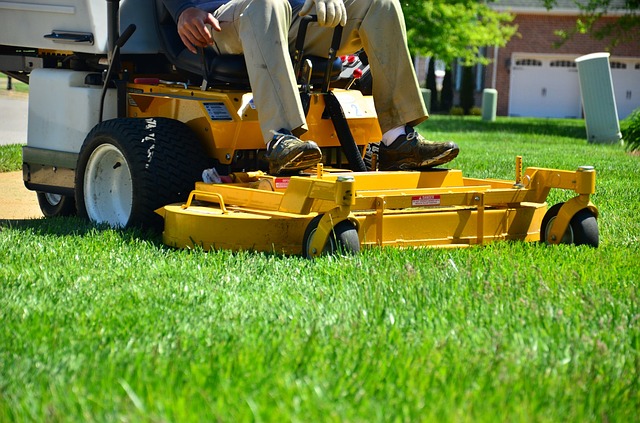The Best Organic Treatments to Feed Your Lawn
Every homeowner wants their grass to be lush and green. But beautiful lawns need proper care. Check out the best organic treatments and practices for your lawn
Why do you need to fertilize your lawn in the first place? Well, if you want the grass to be greener and denser, you should protect it from weeds and pests. Building dense turf can help keep weeds at bay. And you can build it by using the right fertilizers
Organic fertilizers are best.
They use clean, all-natural ingredients. Whereas they tend to be very expensive, they will save you a few greenbacks in the long run as they will break down slowly and keep your lawn well-fed for weeks ahead. At the same time they will protect the grass from weeds, decreasing the need for special treatments, which are pretty costly.
In addition, you need to know how to properly apply fertilizer so that it works wonders to protect your lawn from weeds and pests. The one thing you should be aware of is you need to distribute the fertilizer evenly. Don’t just throw it by hand, instead use spreaders. Otherwise it can damage the grass. For small lawns use drop spreaders. They cover big areas. For large lawns use broadcast spreaders, as they will help you to do more in less time. Broadcast spreaders accommodate more fertilizer, which means you can cover a larger area.
Now, another important thing to do is to remove excess fertilizer so it doesn’t stain your yard or get to your watering system. It can also burn your lawn.
But before you get there, you need to test the soil. Your choice of fertilizer will be based on the nutrients that are present or missing. Determining the soil’s pH is the first thing to do. Generally speaking, it should be 6.5-7.0. If the soil isn’t acidic enough, you will need to add more sulfur. On the other end of the spectrum, if the soil is too acidic, you will have to add lime. There are a couple of ways to test your soil.
- One is to engage a certified professional
- The other is to purchase a pH tester and do the test yourself
Now, get ready for this shocking reveal: you don’t have to buy fertilizers from the store to keep your lawn lush and presentable. Some old-time gardeners suggest using clover to fertilize your lawn. Use purple, red or white clover seeds.
Now, let’s not forget about good, old compost! It can work wonders on any lawn. It’s inexpensive and it can be made from grass clippings, food waste, leaves and other organic matter, which eventually breaks down into humus. It needs both wet and dry material. Sometimes it takes months for organic matter to decompose.
Benefits of compost:
• It achieves fast results
• If you put excess compost accidentally, it won’t burn your lawn
• It has a whole host of nutrients, such as potassium, phosphorus and nitrogen
Once your compost is ready, grab a shovel and spread it around the lawn. Make sure it is evenly distributed. Use a rake to do the trick. You know you have done a great job when you can barely see compost showing. The next thing you want to do is to water the lawn for about 20 minutes. Don’t mow until one week has passed since you fertilized your lawn.
Now, if you still want to use store-bought organic fertilizers, you need to get the right product. Familiarize yourself with the bag numbering system. There are three numbers on a bag of fertilizer, e.g. “10-10-10” or “20-15-5”.
- The first number is for nitrogen (it causes things to grow)
- The middle number represents phosphorus (it helps root development)
- The third number represents potassium (it increases disease and drought resistance).
Different areas of your yard will need different fertilizers. And so will your lawn. Always read the back of the fertilizer bag to find out what is best for your lawn or consult with an expert.
When is the best time to fertilize? Late spring and early fall. And yet you might want to research what time is more suitable for feeding your lawn in your area.
To sum up, the best treatments for your lawn are:
- Compost
- Organic fertilizers
- Clover
The fewer artificial components, the better. Choose wisely and keep your lawn at its best throughout the growing season.
The article is contributed by Patricia Cornwell who runs a team of gardeners in Abbey Wood
Shared On LOU LOU GIRLS BLOG HOP!
Shared on HEALTHY HAPPY GREEN & NATURAL BLOG HOP!
Shared on TUESDAYS WITH A TWIST!


Pingback: Lawn Care Water Conservation Strategies to Consider
Pingback: Organic Lawn Fertilization: What, How, and Why to Fertilize
Great article. I hadn’t thought about using compost for the yard. Our soil is so poor, but I hate buying commercial fertilizer all the time. It can get so expensive.
Thanks for reading my article and commenting. I hope it helps you find natural ways of fertilizer your lawn without spending breaking your wallet. Have a healthy happy blessed day. Marla
Congrats on being a featured post at Wildcrafting Wednesday. Appreciate your wholesome advice on achieving good results on lawn care.
Hi Jennifer,
Thank you! I feel honored to be featured on Wildcrafting Wednesdays and appreciate you visiting my blog. Have a healthy happy blessed day! Marla
I really like to only use organic/natural additives on the lawn for many reasons… we do have some clover in our back yard… and my guys do NOT like it. 🙂 Thank you for the info.
I think its wonderful that you only organic and natural materials in your lawn. It is so important to your healthy and the health of the environment. Thanks for reading my article and commenting. Have a healthy happy blessed day! Marla